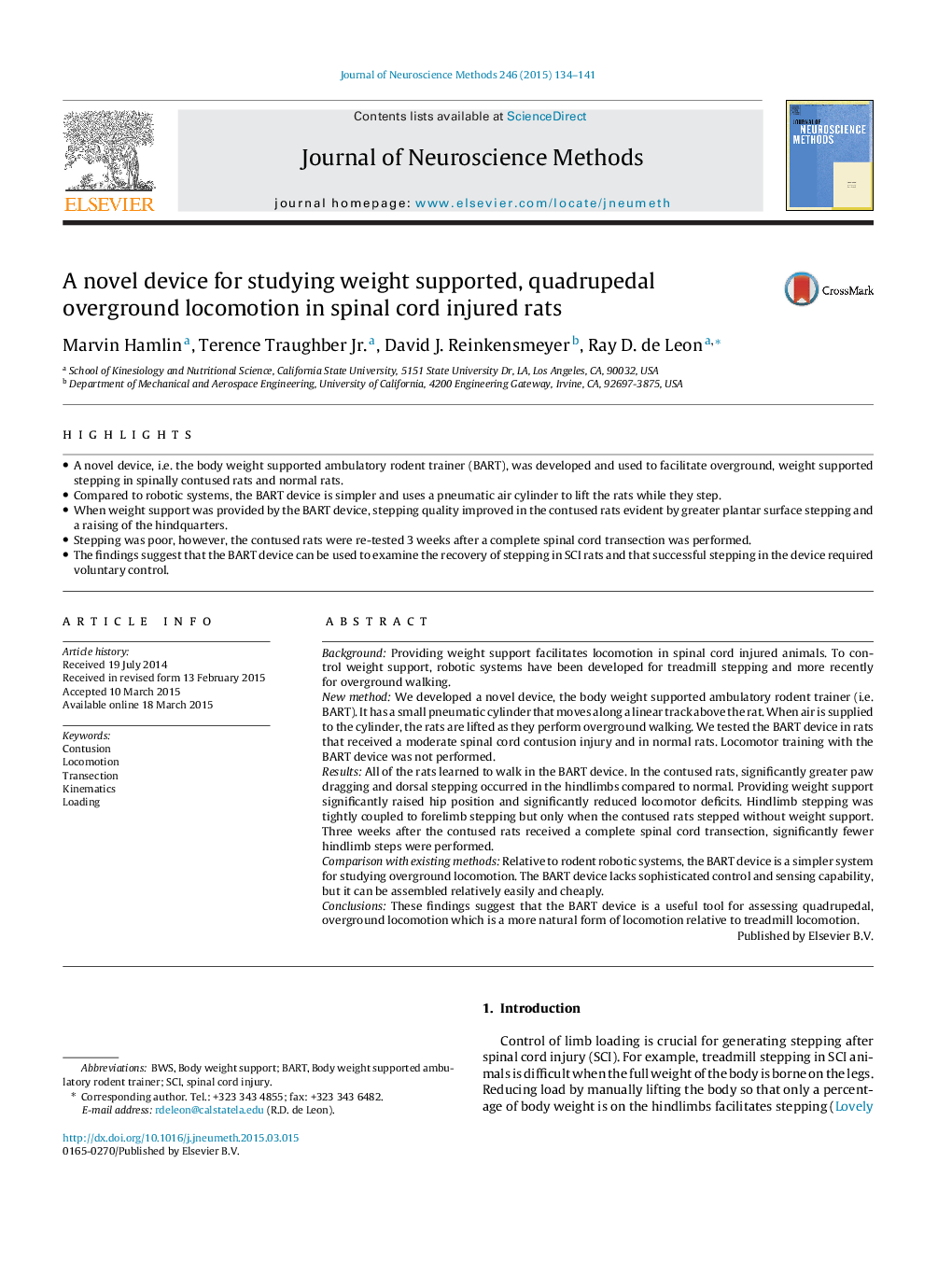| کد مقاله | کد نشریه | سال انتشار | مقاله انگلیسی | نسخه تمام متن |
|---|---|---|---|---|
| 4334929 | 1614623 | 2015 | 8 صفحه PDF | دانلود رایگان |
• A novel device, i.e. the body weight supported ambulatory rodent trainer (BART), was developed and used to facilitate overground, weight supported stepping in spinally contused rats and normal rats.
• Compared to robotic systems, the BART device is simpler and uses a pneumatic air cylinder to lift the rats while they step.
• When weight support was provided by the BART device, stepping quality improved in the contused rats evident by greater plantar surface stepping and a raising of the hindquarters.
• Stepping was poor, however, the contused rats were re-tested 3 weeks after a complete spinal cord transection was performed.
• The findings suggest that the BART device can be used to examine the recovery of stepping in SCI rats and that successful stepping in the device required voluntary control.
BackgroundProviding weight support facilitates locomotion in spinal cord injured animals. To control weight support, robotic systems have been developed for treadmill stepping and more recently for overground walking.New methodWe developed a novel device, the body weight supported ambulatory rodent trainer (i.e. BART). It has a small pneumatic cylinder that moves along a linear track above the rat. When air is supplied to the cylinder, the rats are lifted as they perform overground walking. We tested the BART device in rats that received a moderate spinal cord contusion injury and in normal rats. Locomotor training with the BART device was not performed.ResultsAll of the rats learned to walk in the BART device. In the contused rats, significantly greater paw dragging and dorsal stepping occurred in the hindlimbs compared to normal. Providing weight support significantly raised hip position and significantly reduced locomotor deficits. Hindlimb stepping was tightly coupled to forelimb stepping but only when the contused rats stepped without weight support. Three weeks after the contused rats received a complete spinal cord transection, significantly fewer hindlimb steps were performed.Comparison with existing methodsRelative to rodent robotic systems, the BART device is a simpler system for studying overground locomotion. The BART device lacks sophisticated control and sensing capability, but it can be assembled relatively easily and cheaply.ConclusionsThese findings suggest that the BART device is a useful tool for assessing quadrupedal, overground locomotion which is a more natural form of locomotion relative to treadmill locomotion.
Journal: Journal of Neuroscience Methods - Volume 246, 15 May 2015, Pages 134–141
